What is Japandi Design? Here's Everything You Need to Know

Today, we're going to talk about how to decorate Japandi style. We will look at Japandi color palettes, what materials to use when decorating a Japandi room, some furniture styles, and lastly, where to shop in Japandi. So, let's get right into this.
Japandi design
What is Japandi?
Japandi combines Scandinavian design and Japanese minimalism. A lot of you always wonder how you combine design styles.
Well, Japandi is the perfect example of a hybrid design style. The core design principles are mainly an appreciation for functionality and simplicity and a profound respect for nature and craftsmanship.
I think the thing that most people are drawn to Japandi is that it's kind of the perfect fusion between the Nordic concept of hygge, which is a feeling of warmth and well-being in the home, and the ancient Buddhist concept of wabi-sabi, which is the acceptance of imperfection.
Japanese influences are low-to-the-ground furniture, seamless flow between exterior and interior spaces, acceptance of imperfection, organic materials such as wood and bamboo, and neutral yet warm colors.
Japandi color palette
The Japandi color palette is a hybrid between the bright white, somewhat cool Scandinavian palette and the traditional Japanese one with richer, darker, earthier tones.
Since Japandi is all about neutral minimalism, try to stick to this concept by only using three or four colors in your space and using black mainly as an accent.
So, let's talk about the use of black. Black is a really powerful color that can bring a lot of excitement to an interior. When I think of how to use black in Japandi interiors, I like to think of a beautiful, simple Japanese ink painting.
Basically, your room is the paper, and your black accent element would be the single stroke of ink.
That's how you should use black in a Japandi space. Another color tip for Japandi rooms is to avoid using pops of color. If you're a bright color lover, you might have difficulty loving Japandi.
The best color pop you can bring into a Japandi space is a natural element like a vibrant greenhouse plant.
Japandi walls
Both Scandinavian and Japanese interiors often use white walls because this is a minimalist design style. The white walls in Japanese interiors are like a backdrop for all the wood they use.
Some designers recommend warm white walls for Japanese interiors, and others recommend dark walls. If you go with a white wall, it's going to have more of a Scandinavian vibe to it, whereas if you go with a dark wall, it will have a more Japanese feel.
If you decide to go with white walls, definitely choose a warm white. Don't go cool because cool could make your room feel sterile. Then, warmer furniture and accessories add more contrast and variety to the palette.
Wall texture
Another thing you can do in a Japandi room is add texture to the walls.
Subtle lime-wash walls, sometimes something a little more sculptural with the use of wood, and sometimes even exposed concrete are great choices.
Probably my favorite kind of Japandi accent wall is a wood slat wall.
Wood slat walls are essentially like a cleaner, pared-down version of beadboard. They're just thin vertical wood strips across the wall that create visual and architectural interest.
Shoji screens have also had quite a bit of an influence on Japandi interiors.
Simplicity in interiors
Some of the most successful Scandinavian and Japanese rooms convey simplicity, so it's unsurprising that in Japandi interiors, most elements are without excessive embellishments or frills.
Japandi celebrates the concept of Denshari, which means ridding yourself of items that weigh you down or create negative energy.
This means keeping only things that truly serve a purpose or have meaning.
Declutter
Decluttering is especially important if you're trying to embrace a minimalist style like Japandi.
With Japandi, it's good to try and embrace a quality-over-quantity approach to the items you place in your home. Natural materials are imperative to achieve the minimalist yet cozy atmosphere of Japandi.
Timber stools, terracotta pots, bamboo, paper and rattan, wool, linen, and hemp are all great materials to integrate into your Japandi interior.
Wood in Japandi design
The main difference between Japanese and Scandinavian furniture is that the Scandis tend to use lighter woods, whereas the Japanese use darker to mid-tone woods. You can integrate both wood tones into your Japandi interior, creating a beautiful contrasting effect.
In general, I would recommend you limit the use of wood to three types maximum to ensure that you're creating a well-balanced and cohesive interior.
Low-profile furniture
Being close to the earth inspires peace and serenity and will provide a cozy and comfortable feeling to your Japandi space. When picking furniture for your Japandi interior, opt for pieces with clean lines possibly made of wood.
Indoor and outdoor connection
Blur the line between indoors and outdoors.
Ideally, there should be a connection to the outdoor space. If you have a terrace or veranda, you can connect your interior to your exterior via a sliding glass door.
Then, you could add a vertical garden or a wall of bamboo plants for extra greenery and privacy.
The important thing is that you try to create harmony between indoor and outdoor spaces. You could try integrating indoor plants if you live in a house without outdoor space.
Patterns in Japandi design
You can also try introducing a hint of pattern into your Japandi interior. This can work beautifully if you do so with restraint. In general, there are several ways that you can incorporate patterns into your decor, usually through textiles or artwork.
Still, you can introduce subtle patterns via wallpaper like the beautiful wallpaper pictured here, designed by Amber Lewis and studio for New York City.
Japandi design
Once you get the hang of the Japandi style of interior design, it isn't that hard to figure out how to combine elements.
The main thing to remember is to keep things simple in every way, not only in the actual number of items in your space but also in the design and shapes of the items in your room.
Keep your furnishings simple. Keep your fabrics and textiles solid unless you want to integrate a hint of Japanese patterns like we talked about earlier. Lastly, if you introduce plants, don't go overboard.
What do you think of the Japandi style? Let me know in the comments below.




















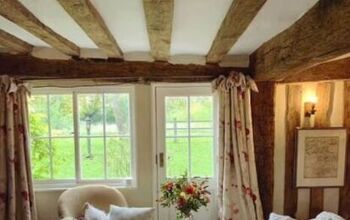

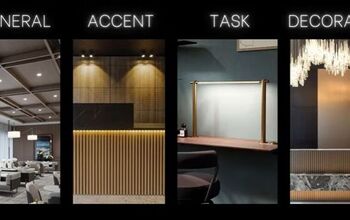






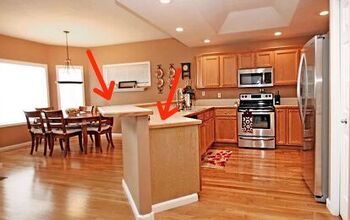



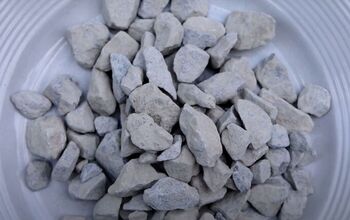
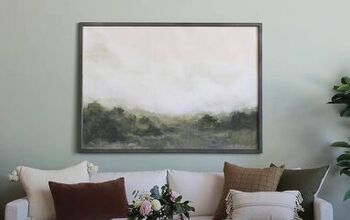



Comments
Join the conversation